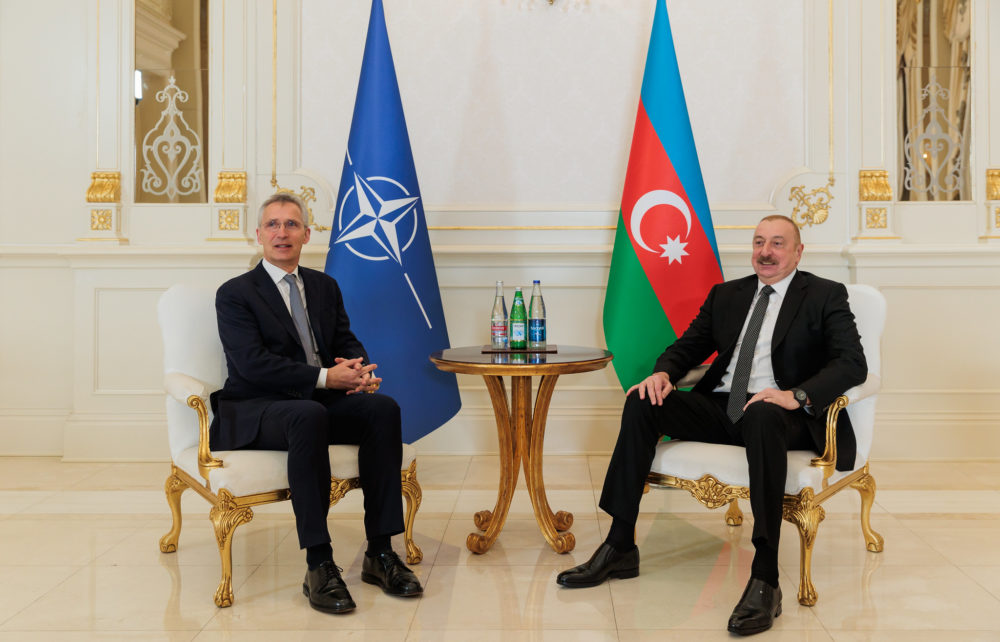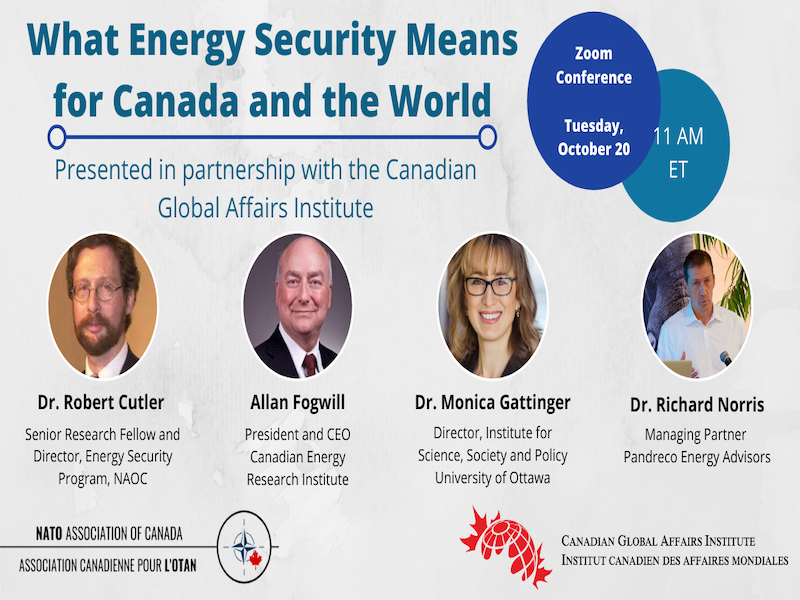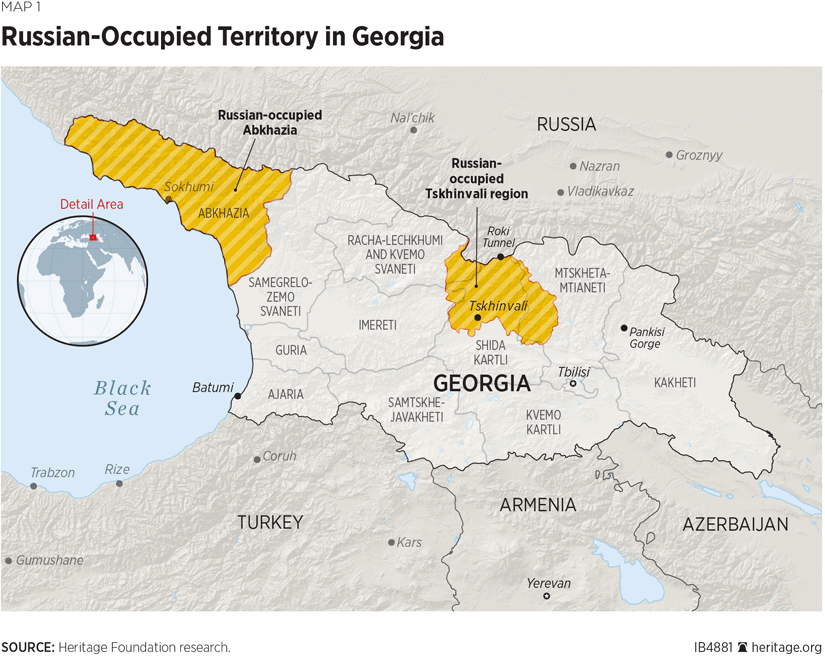Robert M. Cutler, Director of the Energy Security Program, is represented NAOC at the Academic Conference on the 30th Anniversary Of Azerbaijan’s Joining NATO’s Partnership For Peace Programme, being held in Baku on 26–27 November 2024. This is an advance copy of his invited remarks.
Executive Summary: NATO’s Partnership for Peace (PfP) program can expand into critical rare-earth mining and supply chain security in Central Asia, leveraging Azerbaijan and Kazakhstan’s strategic capacities. By integrating mining infrastructure into NATO’s Critical Energy Infrastructure Protection (CEIP) framework, member states can secure resources vital to defence technologies while fostering sustainable development in partner nations. Key initiatives include joint feasibility studies and workshops to assess the readiness of Azerbaijan and Kazakhstan for pilot projects in rare-earth production and transport. Governance improvements, regulatory harmonization, and public-private partnerships are important subsidiary measures to ensure transparency, secure supply chains, and attract investment. NATO’s expertise can enhance Kazakhstan’s nuclear infrastructure and align its rare-earth capabilities with international standards. Azerbaijan, with its proven energy strategy and regional partnerships, is well-positioned to mediate collaborations. The urgency stems from China’s growing influence in the region, highlighted by its regulatory exports and substantial investments in Kazakhstan’s uranium industry. NATO must act swiftly to establish resilient frameworks that reduce strategic dependencies, mitigate geopolitical risks, and bolster regional autonomy. These efforts align with broader alliance objectives, addressing the geopolitical bifurcation of the global system and securing critical supply chains for the coming decades.
Let me begin by clarifying that the NATO Association of Canada is not a part of NATO, nor has it any affiliation with NATO or with the Government of Canada, nor does it receive any funding from either. It is, rather, a nongovernmental organization, a lean think-and-do tank that engages in a good deal of elite networking and policy work while also assuming the civil society task of reminding Canadians that NATO is a good thing and Canada in NATO is a good thing. These remarks are my individual views and should not be taken to represent the views of the NATO Association of Canada or any other organization with which I am affiliated.
I propose that it should be possible to build upon the successes of NATO’s Partnership for Peace (PfP) program in energy security, to extend cooperation with Partner countries in the Caspian Sea region, into the mining sector, particularly for strategically crucial rare-earth elements. This expansion would directly contribute to the core security goals of NATO and its Partner countries.
Let me explain how. By building upon their experience regarding partnership on energy security and energy infrastructure, NATO and Partner countries could begin by conducting joint feasibility studies on integrating mining and mineral supply chains into the PfP framework. This could start with a focus on Azerbaijan and Kazakhstan’s capacity for the production and transport of strategic minerals crucial to defence applications. Technical workshops could assess readiness for pilot projects.
For the NATO countries, this would help to secure access to vital resources that are critical to defence technologies while promoting sustainable development in partner nations. For the Partner countries, the leveraging of NATO’s expertise in technical best-practices would improve the management and security of their mining operations and supply chains, thus reducing vulnerabilities that adversaries could exploit.
The inclusion of the mining sector, and its associated sectors, in NATO’s PfP program would directly support regional stability by reducing dependency on single-source suppliers, as well as single-source purchasers, and mitigating the risks associated with geopolitical tensions. NATO’s assistance to Partner nations to develop their own resources will most importantly enhance their autonomy, while also reducing their strategic vulnerabilities and strengthening their own defence capacities.
Let me mention one possible principal initiative and three possible subsidiary initiatives. The principal initiative consists of the extension of NATO’s Critical Energy Infrastructure Protection (CEIP) programs to the protection of mining and export infrastructure for rare-earth elements as well as other raw materials crucial for defence applications.
Through its various platforms, NATO could promote member-state involvement in securing these supply chains. The CEIP framework can facilitate technical support from NATO member states to secure key mining infrastructure and transport routes along the Middle Corridor.
Additionally, NATO could cooperate with relevant stakeholders to establish joint task forces dedicated to monitoring and safeguarding critical infrastructure. This would help identify potential threats, develop best practices and foster resilience across the supply chain. Such a multi-tiered approach would ensure the long-term sustainability and resilience of these critical resources.
I mentioned three subsidiary initiatives. While they may be pursued simultaneously, for the purpose of exposition, they may be distinguished by three tasks: first, improving governance and transparency; second, aligning regulations; and third, encouraging investments.
The first subsidiary initiative could involve the provision, by NATO member-states, of capacity-building programs for Central Asian governments to enhance transparency in mining and refining contracts, ensuring that exports of rare-earth elements for military applications are not compromised by mismanagement of any kind. NATO’s Building Integrity (BI) program, endorsed by the Heads of State and Government at the July 2016 Warsaw Summit, can frame this subsidiary initiative. Already by 2017, all Central Asian states, with the exception of Tajikistan, were associated with NATO’s BI policy.
The second subsidiary initiative could include the encouragement of regulatory harmonization between member-states and Central Asian countries for trade in raw materials, to facilitate an integrated and cooperative approach to resource management. By smoothing export processes and reducing trade barriers for rare-earth elements and other critical minerals, a reliable supply chain for defence purposes may be better ensured.
A third subsidiary initiative might see NATO encouraging its member states to invest in Central Asian extractive industries through public-private partnerships (PPPs). NATO could also find ways to encourage the promotion of joint ventures that focus on the technological advancement of extractive industries, including the use of modern and sustainable mining techniques.
By facilitating the engagement of private sector entities, NATO could help stimulate economic growth in the region while also meeting strategic security objectives and improving the efficiency of the entire supply chain. Such technological cooperation would benefit both the suppliers and the consumers of these critical materials, strengthening overall defence capabilities.
Through its various platforms, NATO could promote member-state involvement in these tasks, all of which are aspects of ensuring the security of supply chains. By leveraging the CEIP framework, NATO could encourage member-states to offer, and even help to organize or frame, technical support to protect key mining infrastructure and transport routes in Central Asia, ensuring uninterrupted access to strategic minerals.
By working within the established PfP framework, NATO can more effectively integrate these initiatives, ensuring that the policy goals of energy security, strategic-minerals security and infrastructure protection are fully aligned with broader alliance objectives.
To take but one example, Kazakhstan, already a PfP Partner, can benefit from NATO’s extensive energy security expertise. It already engages with the NATO Energy Security Centre of Excellence. Kazakhstan could further develop secure and internationally compliant nuclear infrastructure, reducing its dependence on any single actor like Russia’s Rosatom or analogous Chinese companies.
There are three generally discussed possibilities for the construction of Kazakhstan’s newly approved nuclear power plant (NPP). One is that Russia is the sole contractor. Another is that China is the sole contractor. Each of these choices has its own rationale yet also geo-economic and geopolitical drawbacks for Kazakhstan. Third, Kazakhstan’s President Kassym-Jomart Tokayev has publicly stated that he favours an international consortium with participation by companies from China, France, Russia, and South Korea. This option, however, faces logistical challenges, particularly in dividing responsibilities among consortium members and determining the sourcing of critical components.
Tokayev has already discussed with France’s President Emmanuel Macron the possible participation of the French companies Orano and EDF in particular. Orano focuses on various aspects of the nuclear fuel cycle, including uranium mining, enrichment, and waste management. EDF specializes in design, construction, and operational management.
This opens the door to a fourth possibility. Orano, EDF and the British-German firm Urenco together can provide all the NPP construction and management services necessary to realize the project. But Kazatomprom, which focuses mainly on mining and processing, has not been mentioned in any of these schemes.
An offer to take Kazatomprom into a Western consortium and to make capacity building in Kazakhstan an explicit goal of the project, would have to be welcomed in Astana. Cooperation via NATO platforms could likewise offer Kazakhstan access not only to technical specialists from NATO countries but also to more joint training exercises and workshops, to complement an exchange of knowledge on best practices in nuclear safety and energy resilience.
And that would be only a “demonstration project” for the constructive expansion of the energy component of NATO’s Partnership for Peace into broader natural-resource and rare-earth domains. Indeed, there is no reason even to wait for the NPP project. Central Asia, especially Kazakhstan, is a periodic table of the elements, especially rare-earth elements, and their exploration and development have been underway for some time.
Azerbaijan—with its proven track record in developing diversified energy export routes and balancing relations amongst Europe, Russia and regional neighbours—could act as a mediator or facilitator in building partnerships in this domain with Kazakhstan and other Central Asian countries as appropriate. This proposal aligns with Azerbaijan’s growing role as a key strategic partner for Central Asian nations like Kazakhstan, particularly in supporting the diversification of energy and resource routes away from single-source dependencies.
Official Baku, if it so chose, would be well placed to help persuade Astana—as well as Tashkent—of the advantages of proceeding in such a manner: this would be a win-win-win situation. This alignment would also benefit Azerbaijan, particularly by advancing the build-out and development of the Port of Alat.
To conclude. If this is to be done, a start must be made quickly, as soon as possible. A few months ago, China formally joined the Middle Corridor organization through the participation of its national railway corporation. There is little doubt that Beijing will seek to export its regulatory norms, management practices and surveillance infrastructure to the region. Just a few weeks ago, China purchased fully half—half!—of Kazakhstan’s annual production of new uranium ore for several billion dollars.
Things are happening faster in this part of the world than may be evident from a distance. The structural bifurcation of the international system—its governing bipolarisation into an Anglosphere and a Sinosphere (notwithstanding all the other actors that make it look more “multipolar” than it essentially is)—will only intensify over the next 15–20 years until the inevitable tipping-point is reached. What is done now will set the framework and the rules for how the international system, and the main actors in it, will survive and prosper, or fail and be overwhelmed.
Photo: ‘NATO Secretary General visits Azerbaijan’ by NATO North Atlantic Treaty Organization. Licensed from Flickr under CC BY-NC-ND 2.0.
Disclaimer: Any views or opinions expressed in articles are solely those of the authors and do not necessarily represent the views of the NATO Association of Canada.




